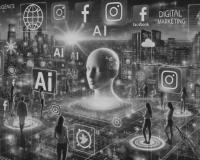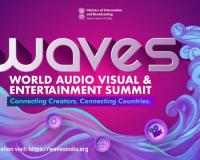Does Your Online Avatar Reveal Yourself?
By Subhrajit Dutta (Subhro) What is Ethnography? It involves “participating overtly or covertly in people’s daily lives for an extended period of time. Watching and recording what happens there. Listening to what is being said. Asking questions and holding conversations.” It is believed that ethnography entailed descriptive and interpretive writing endeavors at a time when the British Empire attempted to understand the different cultures it

By Subhrajit Dutta (Subhro)
What is Ethnography? It involves “participating overtly or covertly in people’s daily lives for an extended period of time. Watching and recording what happens there. Listening to what is being said. Asking questions and holding conversations.” It is believed that ethnography entailed descriptive and interpretive writing endeavors at a time when the British Empire attempted to understand the different cultures it interacted with. Scholars in this discipline engage with participants to gauge the cultural differences. This is indeed crucial to craft rules of engagement.
Cut to 2020, the time of COVID 19, when social interactions in the physical space gave way to digital transactions. Now digital ethnography has assumed significance more than ever as people are spending long hours on internet. Every time we login to cyberspace, upload and download data using our phone or any other digital devices, we can be observed. What do we do? How do we perform in the virtual space? What we would like to project? Unlike the earlier times of classical ethnographic studies like the one conducted by Bronislaw Malinowski with the local inhabitants of Trobriand Islands or Margaret Mead in Samoa, where the researcher was needed to physically observe the participants, today’s researchers can make minute observations by sifting through the trove of data that we leave behind. Welcome to the world of Digital Ethnography!
In the quest for furthering academic excellence in communication research, School of Media, Communication & Fashion (SMCF) under Adamas University (AU) in Kolkata and International Association for Media and Communication Research (IAMCR) jointly organized IAMCR – India Webinar Series on Media and Communication Research. Under this series, Prof. Graham Murdock in the webinar titled “Virtual Ethnography: Promises and Problems” held on August 5, 2020 described how digital ethnography— with all its positives and shortcomings—can phenomenally impact our lives.
Graham Murdock is an emeritus professor of culture and economy in the department of social sciences at Loughborough University. He has held the Bonnier Chair at University of Stockholm and the Teaching Chair at Free University of Brussels. His recent books as co-editor include Money Talks: Media, Markets, Crisis (2015) and Carbon Capitalism and Communication: Confronting Climate Crisis (Palgrave 2017).
Digital ethnography and its ramifications
Prof. Christine Hine of Sociology, defines Digital Ethnography, “We learn about the internet by immersing ourselves in it and conducting our ethnography using it, as well as talking with people about it, watching them use it. And seeing it manifest in other settings”. And these include fundamental, critical and sometimes ethical questions, which we will describe in the following later on.
Prof. Murdock while underlining the power of digital technologies emphasized on its all-encompassing nature that now can be leveraged across all stages of research and all methods, e.g., digitally collecting material, documentation, interviews, surveys, ethnography, analyzing material, presenting data and visualization. It can analyze the trends of big data and the co-relation between what we consume vis-à-vis what we give that can lead to a much bigger discussion of whether we need “pollution” and create “atmospheric heat” to generate power or a sustainable energy source is desired. Through data visualization regarding global internet connectivity, he also presented the dichotomy of the “connected” and “disconnected” world.
The characteristics of digital ethnography enables us to move from intensive study of a bounded location to exploring how people move between and use diverse sites of interaction. How the same object or production is interpreted and related to across multiple sites [as described in Christine Hine’s study of ‘Antiques Roadshow’] and finally shift focus from ‘fields’ to networks and flows.
The advantages are numerous. The interactive nature of the internet opens up possibilities for the subjects of research to contribute actively. Researchers can create a homepage for the study positing their findings and interpretations and invite comments and contributions.
How do we collect data in an ethnographic study? By recording spontaneous conversations and interactions, conducting open ended interviews and group discussions, life histories, participant diaries, videos and photographs. The study of social ethnography like “Street Corner Society” by W.F. Whyte entered into the genre of media ethnography with “Media Worlds” or “Hollywood the Dream factory” to name a few, to the groundbreaking study of ethnographies of news production by Philip Schlesinger for BBC News titled “Putting reality together” that focuses on the internal working of BBC.
In classical ethnography, Prof. Murdock observes “You look at people’s networks and flows, go beyond situations and multiple opportunities that they have. “Here, participants are active, they craft interpretations, and collaborate in projects. It helps us understand understanding how people see the world.”
What does your online avatar reveal?
On the contrary, digital ethnography involves “avatars and the ethics of concealment”. In a virtual world we see only an avatar. Prof. Murdock asks: “What are you looking at? In the virtual space people can project a particular image of themselves or merely “perform” as they please – who are we really interacting with? Where do they come from? What is the worldview of those participants? How can we perceive them fairly? We can have difficult negotiations in this situation as here we know very little about them along with a lack of context. What we mostly have is a “thin” description.
An exclusive focus on digital ethnography leaves behind a chunk of people who are not our “connections”. In virtual ethnography scenario, participants’ lives disappear, they become unvoiced and unrepresented. Substantial people will never be online.
Quest for a balance
Also, it raises the question whether research is a form of surveillance. Listening in to conversations or tracking movements online may allow participants to be identified. Using online material without the participants’ permission involves serious concern. Prof argues, “People are not the research subject to exploit. They are living human beings who deserve respect”. Virtual ethnography is as an extension and not a substitute. We indeed need a blended approach, a mix of classical and digital ethnography.
The road ahead will involve three major sources of major content producers on social media. Content produced and exchanged by amateurs, content developed by ‘modders’ who ‘modify’ computer games by adding new material, or original production by employed professionals.
Wish to know more on netnography, ethnography and digital ethnography? Watch the facebook page of Adamas University for our future webinars; you never know when another one of your choice just comes your way.
About the writer:Subhrajit Dutta (Subhro) is an Associate Professor at the School of Media, Communication & Fashion (SMCF) in Adamas University, Kolkata. With more than 15 years of experience in Internal and External Communications, Strategic Marketing and Digital & Social Media, he has worked with the leadership and cross-functional teams of MNCs across continents and cultures.
He has also taught Communications and Digital Marketing in Nepal, Bangladesh and India in a number of leading institutions and universities.
ooo




.jpeg)



.jpeg)


.jpeg)
